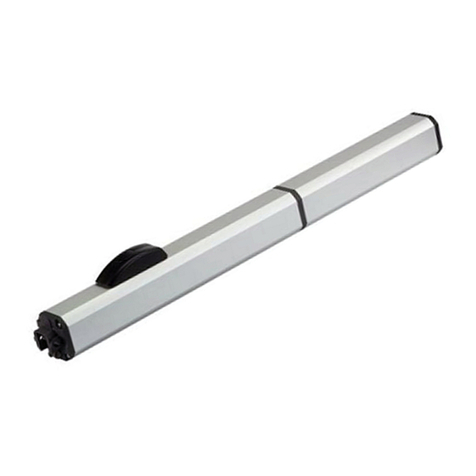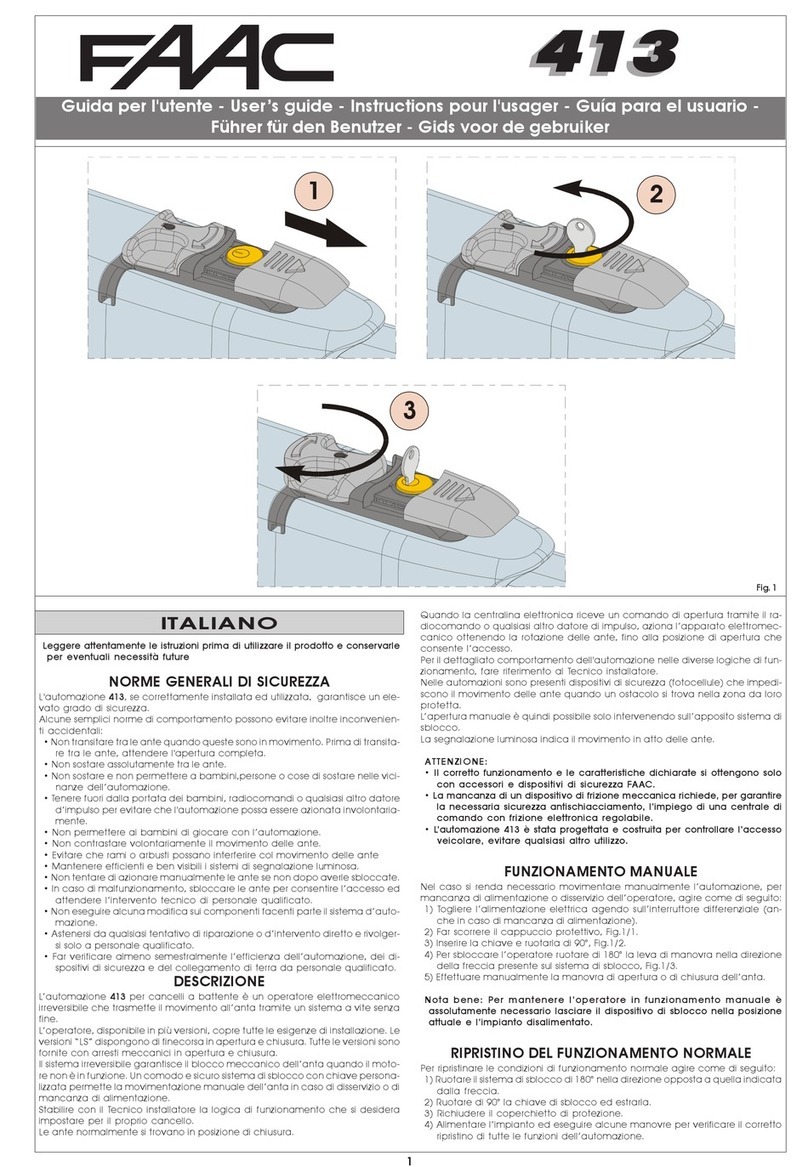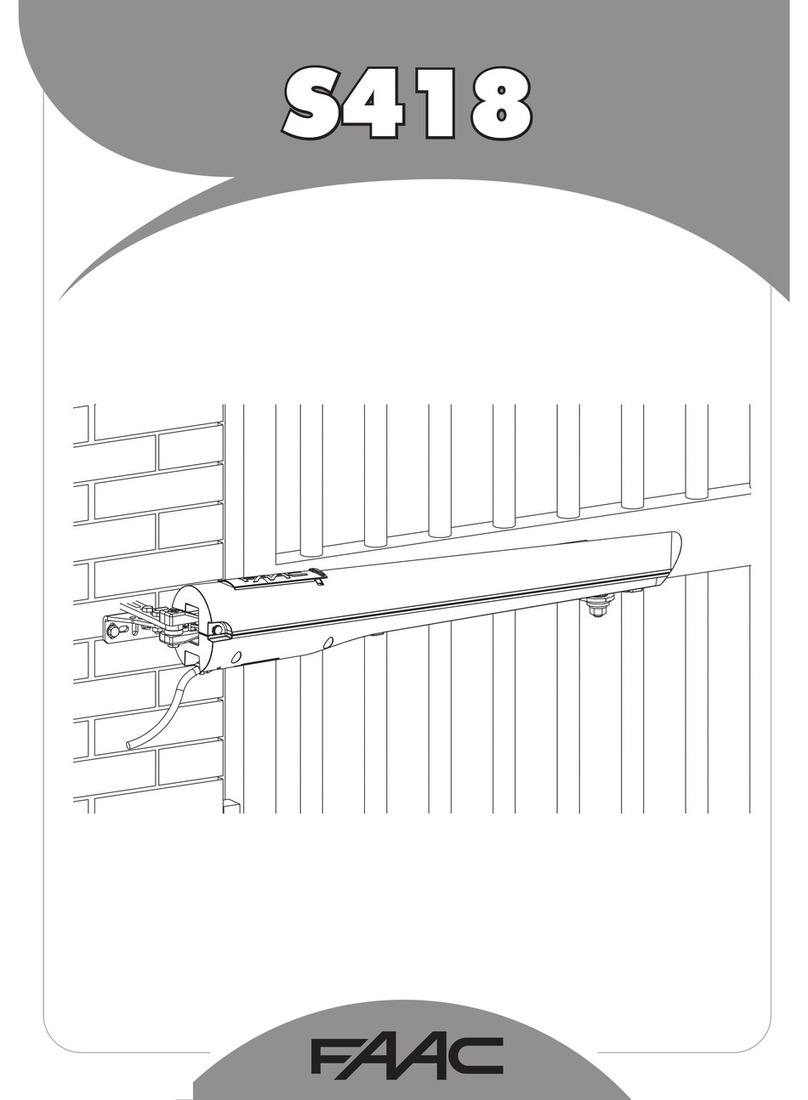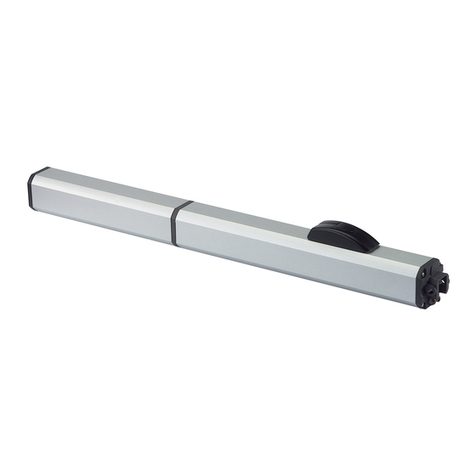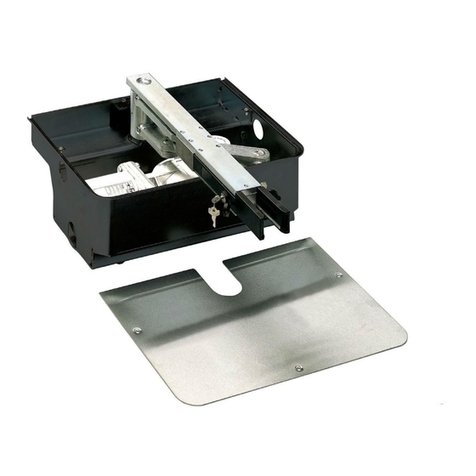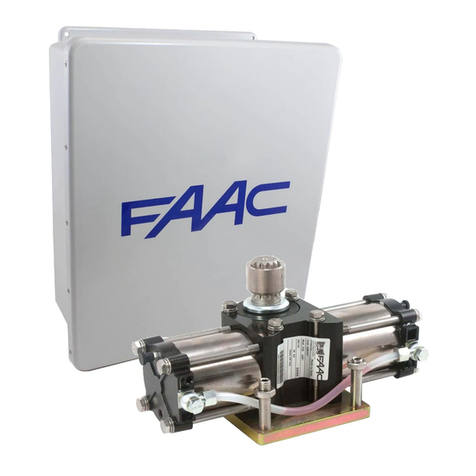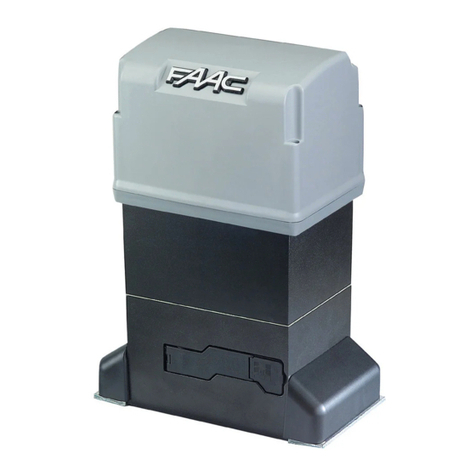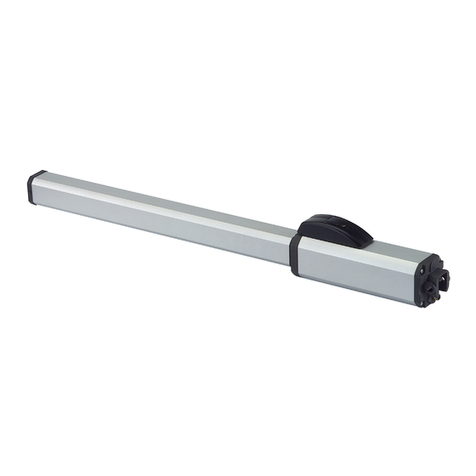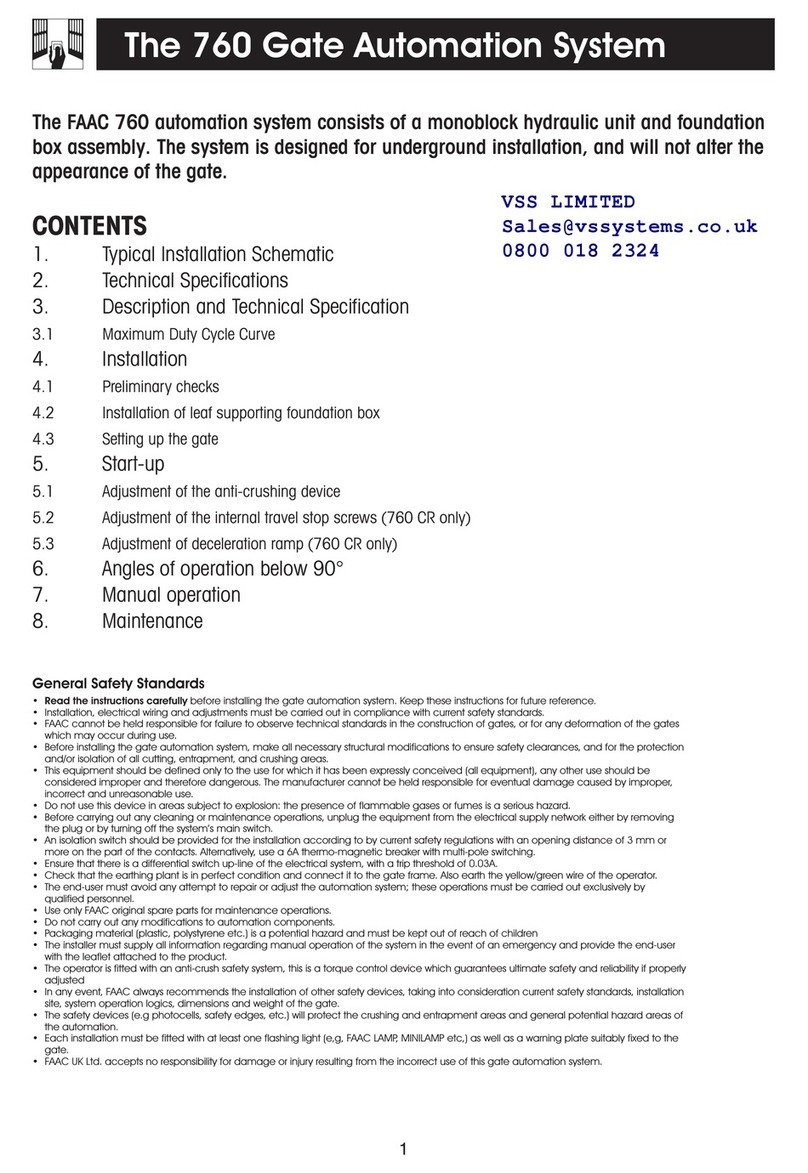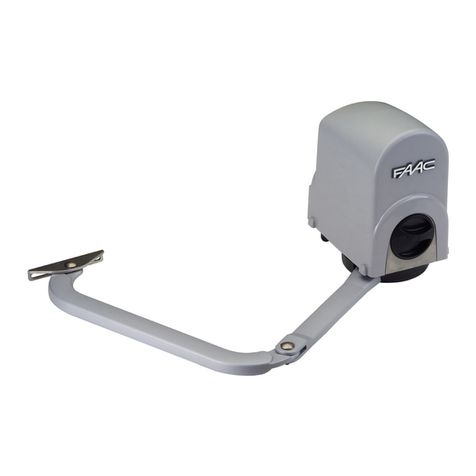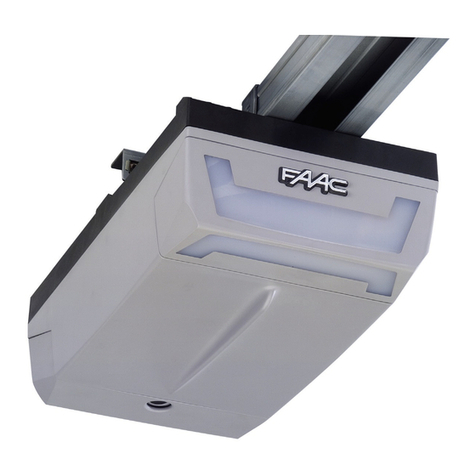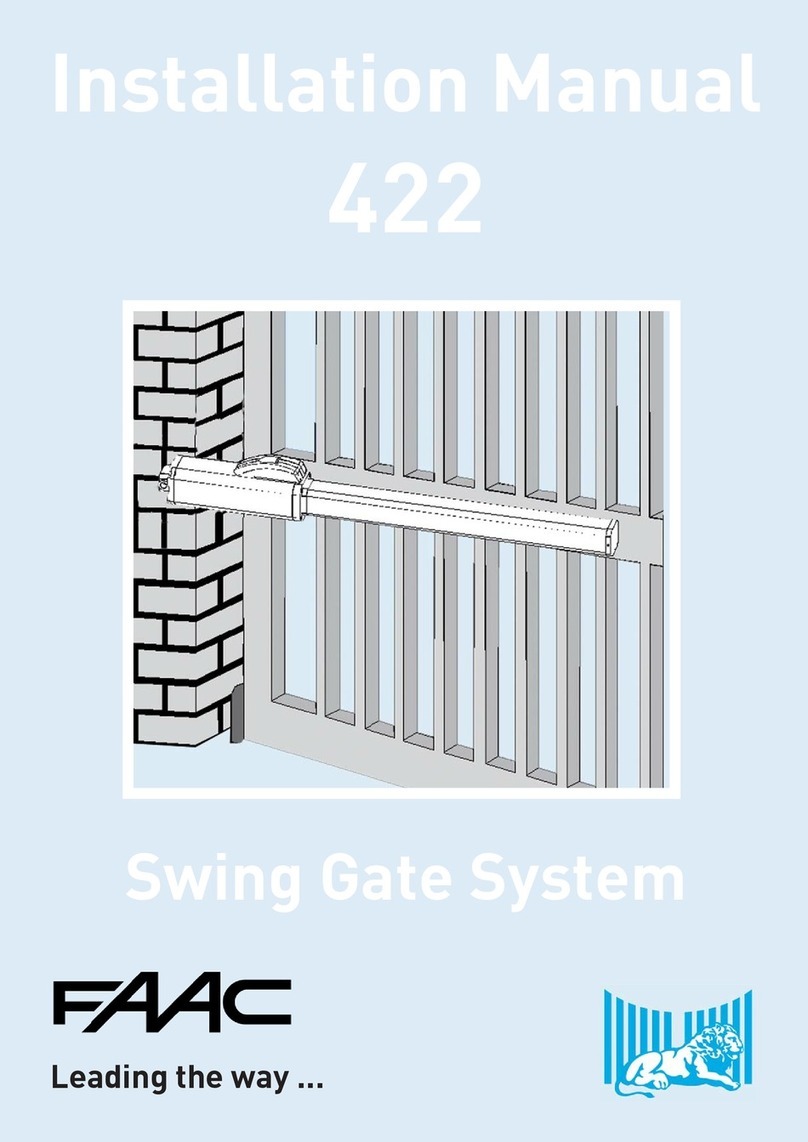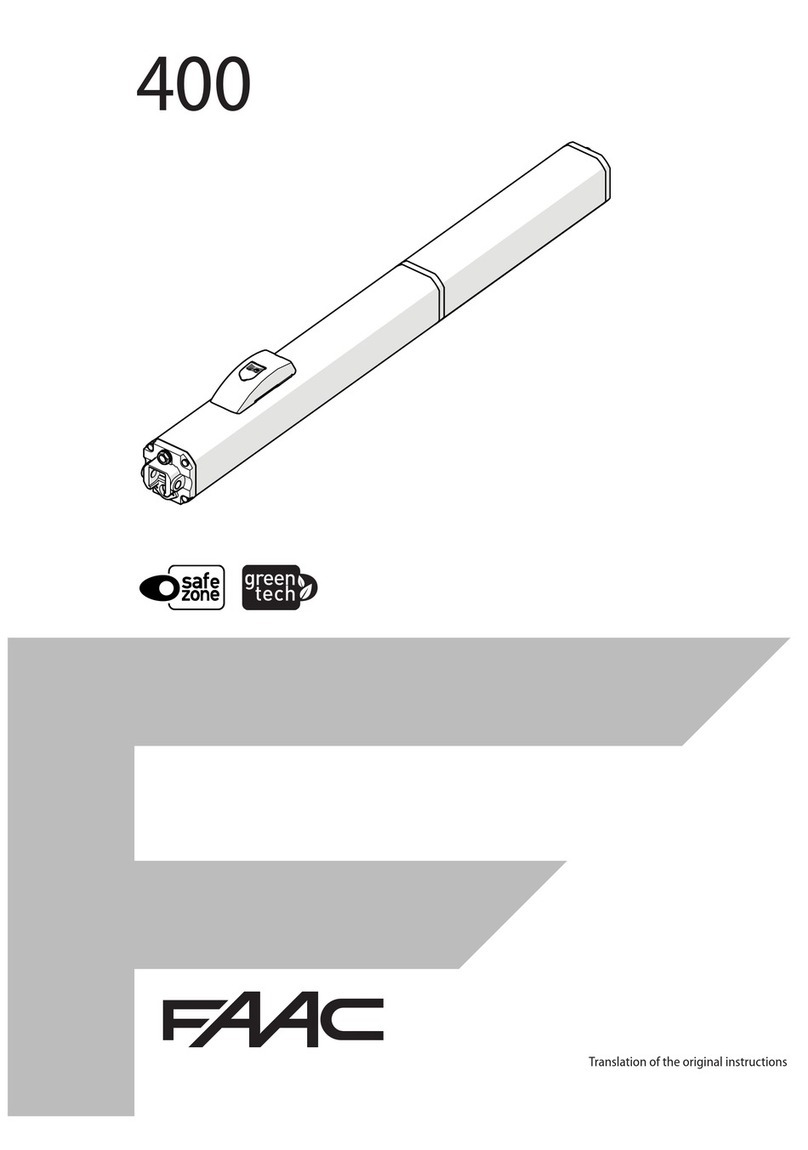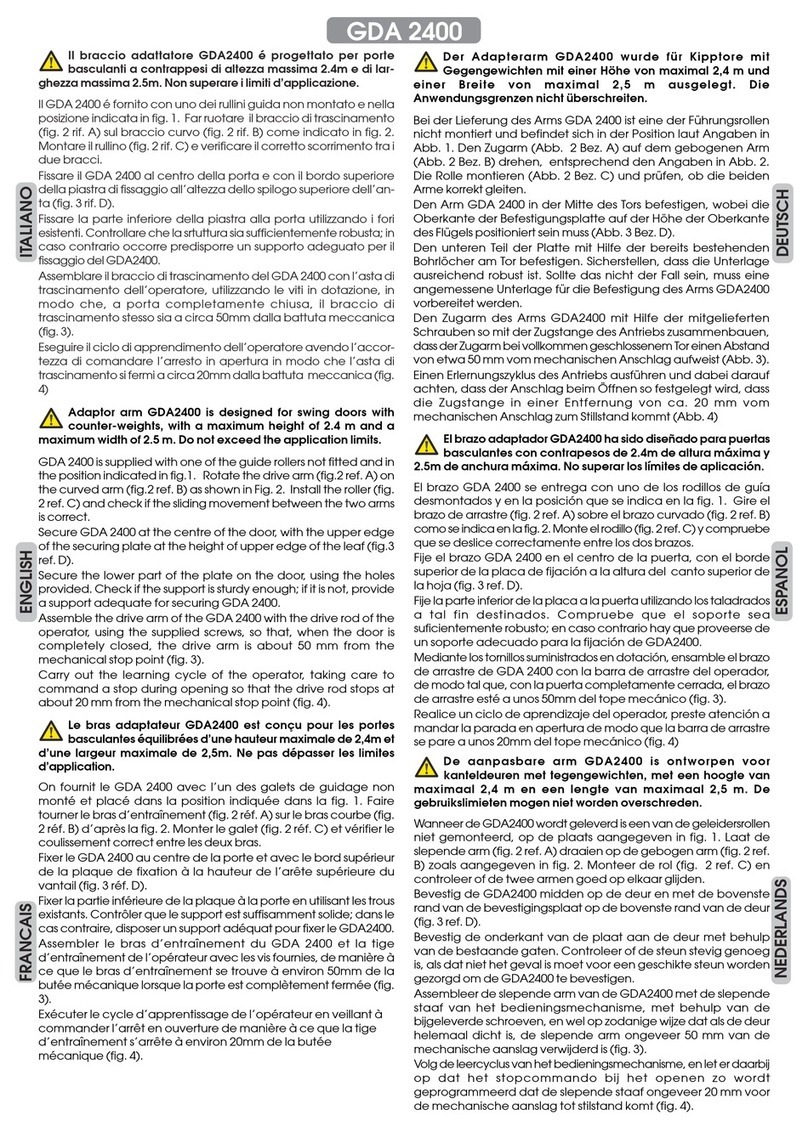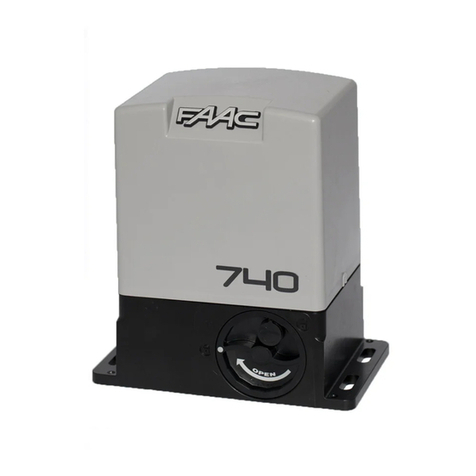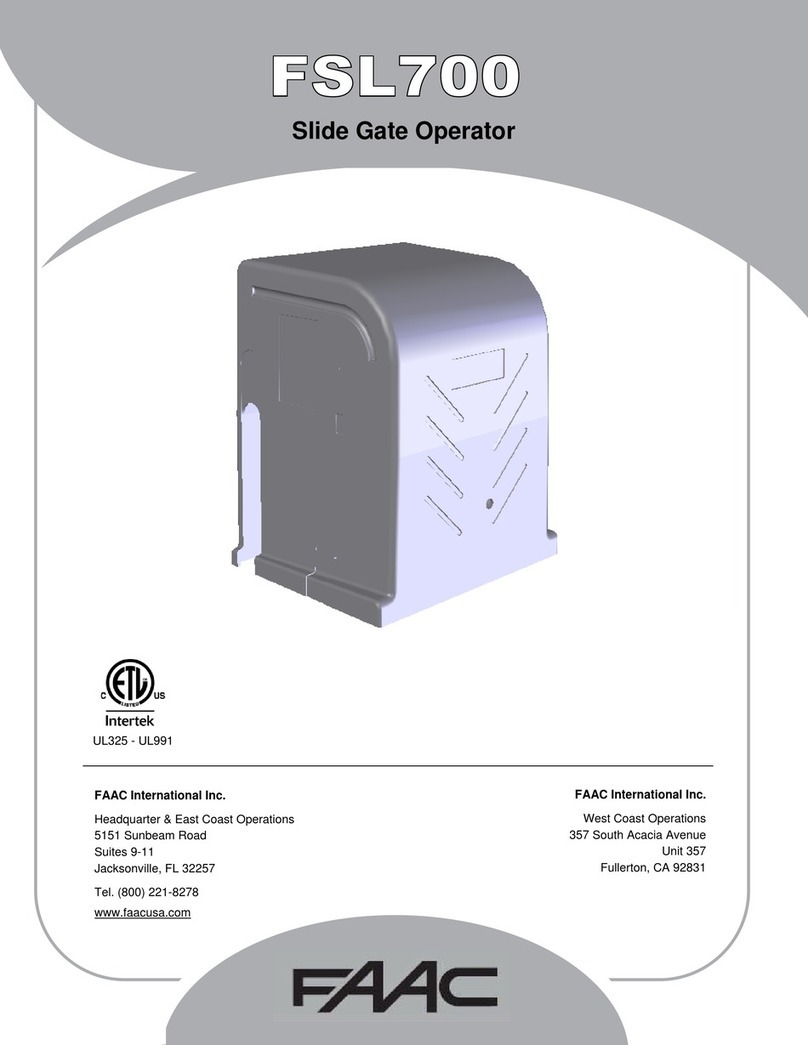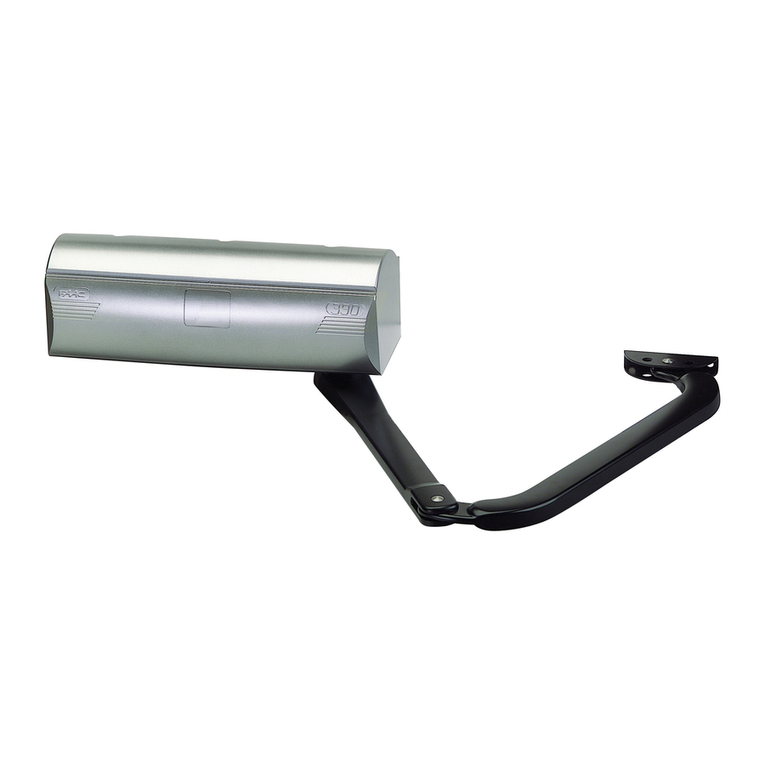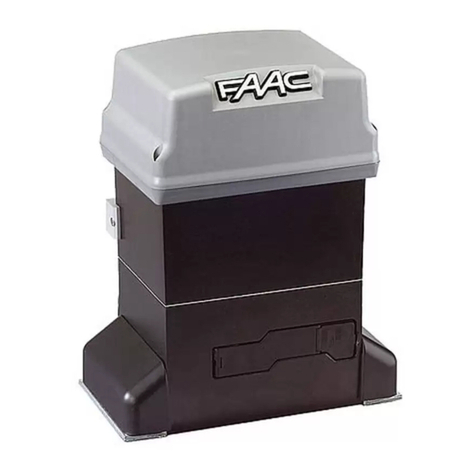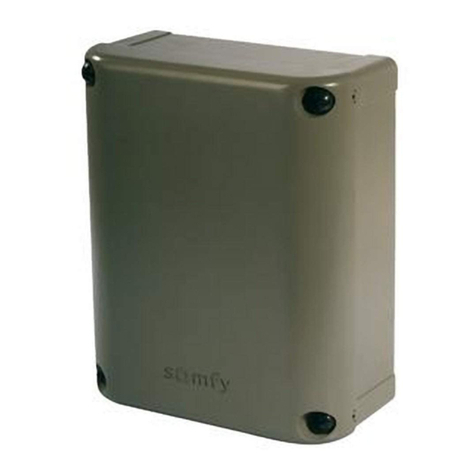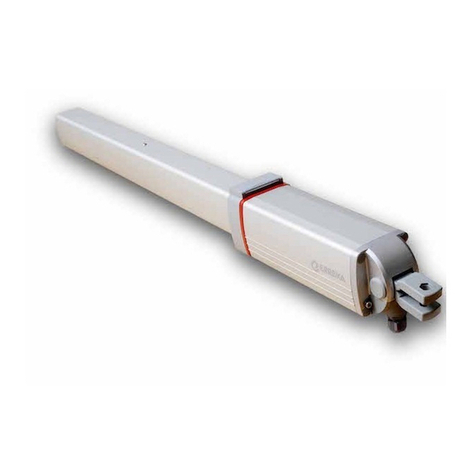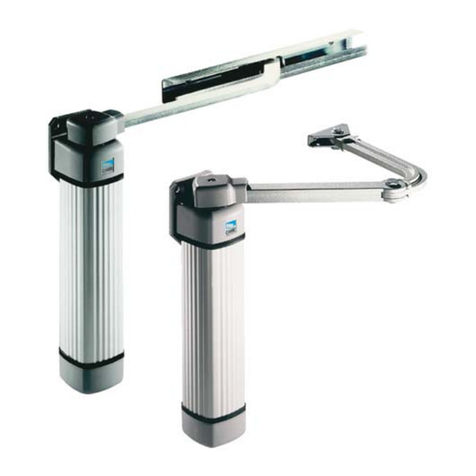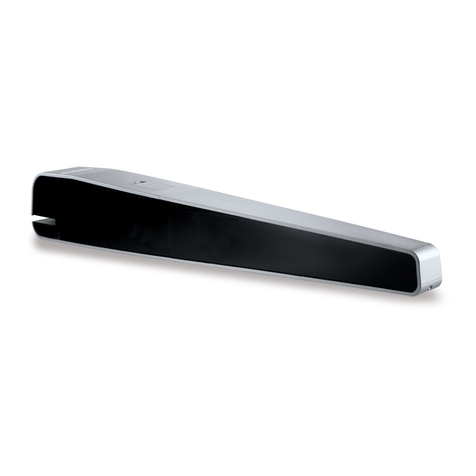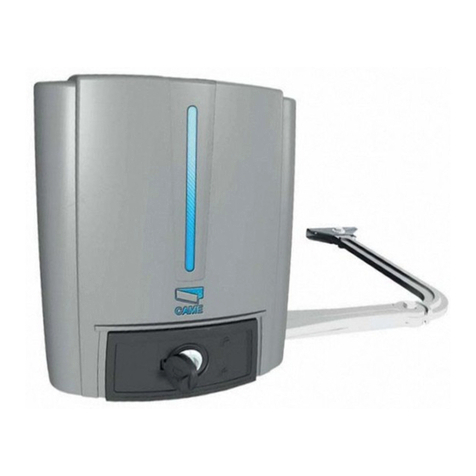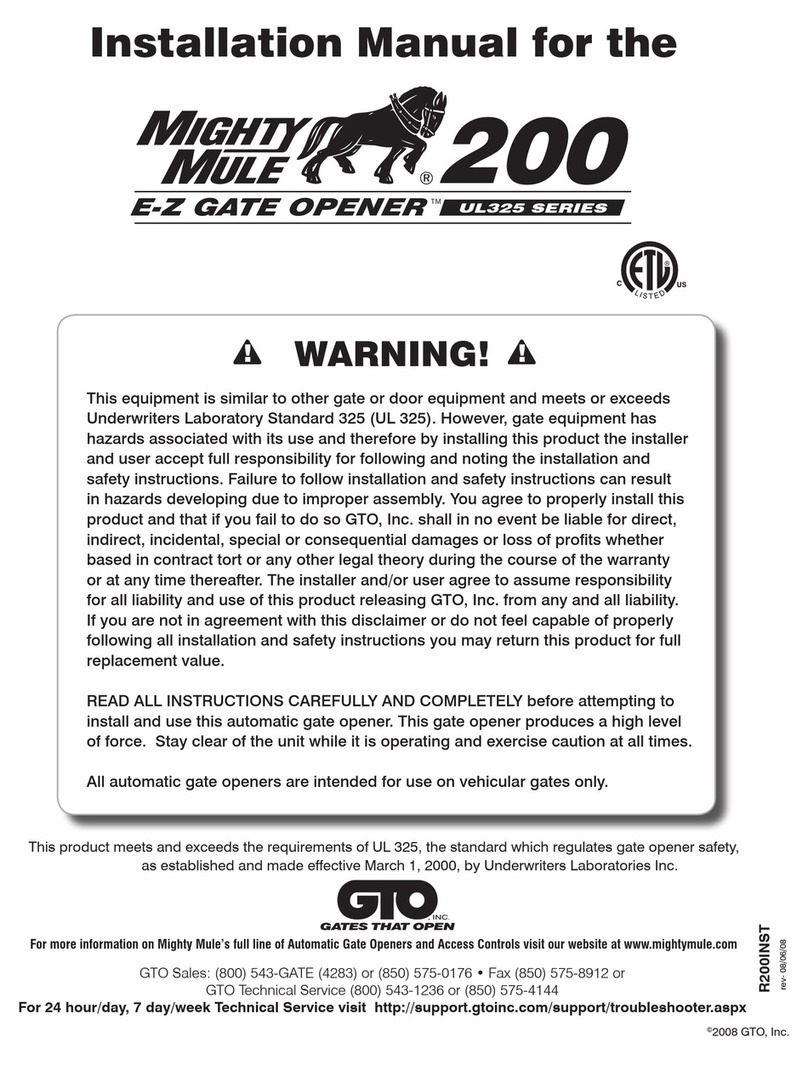3
1. Install the gate operator only when the following condi-
tions have been met:
• The operator is appropriate for the type and usage
class of the gate.
• All openings of a horizontal slide gate have been
guarded or screened from the bottom of the gate to
a minimum of 4 feet (1.25 m) above the ground to
prevent a 2.25 inch (55 mm) diameter sphere from
passing through openings anywhere in the gate or
through that portion of the adjacent fence that the
gate covers when in the open position.
• All exposed pinch points are eliminated or guarded.
• Guarding is supplied for exposed rollers.
2. The operator is intended for installation on gates used by
vehicles only. Pedestrians must be provided with a sepa-
rate access opening.
3. To reduce the risk of entrapment when opening and
closing, the gate must be installed in a location that
allows adequate clearance between the gate and
adjacent structures. Swinging gates shall not open
outward into public access areas.
4. Before installing the gate operator, ensure that the gate
has been properly installed and that it swings freely in
both directions. Do not over-tighten the operator clutch
or pressure relief valve to compensate for a damaged
gate.
5. User controls must be installed at least 6 feet (1.83 m)
away from any moving part of the gate and located
where the user is prevented from reaching over, under,
around or through the gate to operate the controls.
Controls located outdoors or those that are easily acces-
sible shall have security features to prevent unauthorized
use.
6. The Stop and/or Reset buttons must be located within
line-of-sight of the gate. Activation of the reset control
shall not cause the operator to start.
Important Installation Instructions
• WARNING: TO REDUCE THE RISK OF SEVERE INJURY OR
DEATH:
• READ AND FOLLOW ALL INSTRUCTIONS.
• Never let children operate or play with the gate con-
trols. Keep remote controls away from children.
• Always keep people and objects away from the gate.
NO ONE SHOULD CROSS THE PATH OF A MOVING GATE.
• Test the gate operator monthly. The gate MUST reverse
on contact with a rigid object or when an object
activates a non-contact sensor. If necessary, adjust
the force or the limit of travel and then retest the gate
operator. Failure to properly adjust and retest the gate
operator can increase the risk of injury or death.
• Use the manual release mechanism only when the
gate is not moving.
• KEEP GATE PROPERLY MAINTAINED. Have a qualified
service person make repairs to gate hardware.
• The entrance is for vehicles only. Pedestrians must use
a separate entrance.
SAVE THESE INSTRUCTIONS.
IMPORTANT SAFETY INFORMATION
Important Safety Instructions
Gate Construction
Vehicular gates should be constructed and installed in
accordance with ASTM F2200: Standard Specification for
Automated Vehicular Gate Construction.
For more information, contact ASTM at: www.astm.org
Installation
• If you have any questions or concerns regarding the
safety of the gate operating system, do not install the
operator and consult the manufacturer.
• The condition of the gate structure itself directly affects
the reliability and safety of the gate operator.
• Only qualified personnel should install this equipment.
Failure to meet this requirement could cause severe
injury and/or death, for which the manufacturer cannot
be held responsible.
• The installer must provide a main power switch that
meets all applicable safety regulations.
• It is extremely unsafe to compensate for a damaged
gate by increasing hydraulic pressure.
General Safety Precautions
7. All warning signs and placards must be installed and easily
seen within visible proximity of the gate. A minimum of one
warning sign shall be installed on each side of the gate.
8. For gate operators that utilize a non-contact sensor (photo
beam or the like):
• See instructions on the placement of non-contact
sensors for each type of application.
• Exercise care to reduce the risk of nuisance tripping,
such as when a vehicle trips the sensor while the gate is
still moving.
• Locate one or more non-contact sensors where the
risk of entrapment or obstruction exists, such as at the
reachable perimeter of a moving gate or barrier.
• Use only FAAC “Photobeam” photoelectric eyes to
comply with UL325.
9. For gate operators that utilize a contact sensor (edge
sensor or similar):
• Locate one or more contact sensors where the risk of
entrapment or obstruction exists, such as at the leading
edge, trailing edge, and post mounted both inside and
outside of a vehicular horizontal slide gate
• Locate one or more contact sensors at the bottom
edge of a vehicular vertical lift gate.
• Locate one or more contact sensors at the bottom
edge of a vertical barrier (arm).
• Locate one or more contact sensors at the pinch point
of a vehicular vertical pivot gate.
• Locate hard-wired contact sensors and wiring so that
communication between sensor and gate operator is
not subjected to mechanical damage.
• Locate wireless contact sensors, such as those that
transmit radio frequency (RF) signals, where the
transmission of signals are not obstructed or impeded
by building structures, natural landscaping or similar
hindrances. Wireless contact sensors shall function under
their intended end-use conditions.
• Use only FAAC MSE MO, CN60 or M60 edge sensors.
